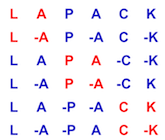198 SUBROUTINE cunbdb3( M, P, Q, X11, LDX11, X21, LDX21, THETA,
200 $ TAUP1, TAUP2, TAUQ1, WORK, LWORK, INFO )
207 INTEGER INFO, LWORK, M, P, Q, LDX11, LDX21
210 REAL PHI(*), THETA(*)
211 COMPLEX TAUP1(*), TAUP2(*), TAUQ1(*), WORK(*),
212 $ x11(ldx11,*), x21(ldx21,*)
219 INTEGER CHILDINFO, I, ILARF, IORBDB5, LLARF, LORBDB5,
228 REAL SCNRM2, SROUNDUP_LWORK
229 EXTERNAL SCNRM2, SROUNDUP_LWORK
232 INTRINSIC atan2, cos, max, sin, sqrt
239 lquery = lwork .EQ. -1
243 ELSE IF( 2*p .LT. m .OR. p .GT. m )
THEN
245 ELSE IF( q .LT. m-p .OR. m-q .LT. m-p )
THEN
247 ELSE IF( ldx11 .LT. max( 1, p ) )
THEN
249 ELSE IF( ldx21 .LT. max( 1, m-p ) )
THEN
255 IF( info .EQ. 0 )
THEN
257 llarf = max( p, m-p-1, q-1 )
260 lworkopt = max( ilarf+llarf-1, iorbdb5+lorbdb5-1 )
262 work(1) = sroundup_lwork(lworkopt)
263 IF( lwork .LT. lworkmin .AND. .NOT.lquery )
THEN
267 IF( info .NE. 0 )
THEN
268 CALL xerbla(
'CUNBDB3', -info )
270 ELSE IF( lquery )
THEN
279 CALL csrot( q-i+1, x11(i-1,i), ldx11, x21(i,i), ldx11, c,
283 CALL clacgv( q-i+1, x21(i,i), ldx21 )
284 CALL clarfgp( q-i+1, x21(i,i), x21(i,i+1), ldx21, tauq1(i) )
286 CALL clarf1f(
'R', p-i+1, q-i+1, x21(i,i), ldx21, tauq1(i),
287 $ x11(i,i), ldx11, work(ilarf) )
288 CALL clarf1f(
'R', m-p-i, q-i+1, x21(i,i), ldx21, tauq1(i),
289 $ x21(i+1,i), ldx21, work(ilarf) )
290 CALL clacgv( q-i+1, x21(i,i), ldx21 )
291 c = sqrt( scnrm2( p-i+1, x11(i,i), 1 )**2
292 $ + scnrm2( m-p-i, x21(i+1,i), 1 )**2 )
293 theta(i) = atan2( s, c )
295 CALL cunbdb5( p-i+1, m-p-i, q-i, x11(i,i), 1, x21(i+1,i), 1,
296 $ x11(i,i+1), ldx11, x21(i+1,i+1), ldx21,
297 $ work(iorbdb5), lorbdb5, childinfo )
298 CALL clarfgp( p-i+1, x11(i,i), x11(i+1,i), 1, taup1(i) )
299 IF( i .LT. m-p )
THEN
300 CALL clarfgp( m-p-i, x21(i+1,i), x21(i+2,i), 1,
302 phi(i) = atan2( real( x21(i+1,i) ), real( x11(i,i) ) )
305 CALL clarf1f(
'L', m-p-i, q-i, x21(i+1,i), 1,
306 $ conjg(taup2(i)), x21(i+1,i+1), ldx21,
309 CALL clarf1f(
'L', p-i+1, q-i, x11(i,i), 1, conjg(taup1(i)),
310 $ x11(i,i+1), ldx11, work(ilarf) )
317 CALL clarfgp( p-i+1, x11(i,i), x11(i+1,i), 1, taup1(i) )
318 CALL clarf1f(
'L', p-i+1, q-i, x11(i,i), 1, conjg(taup1(i)),
319 $ x11(i,i+1), ldx11, work(ilarf) )

